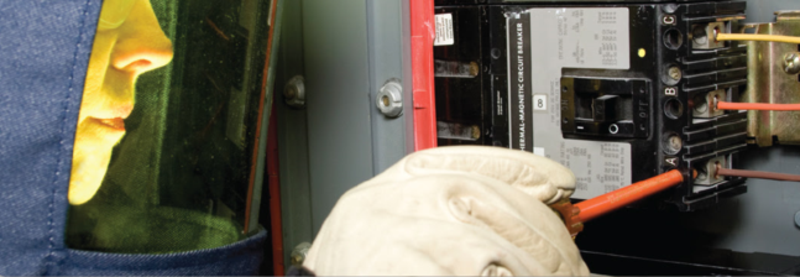Welcome to Engineering Analysis & Planning. Our energy analyses will provide the tools for optimizing your energy performance. Our electrical analyses will enhance safety and improve the reliability of your critical infrastructure.
Analysis
Copyright © 2014 Engineering Analysis & Planning. All Rights Reserved.
713-598-3193
ARC FLASH ANALYSIS
Numerous workers are injured or killed each year while working on energized equipment. Defining arc flash hazards raises awareness of the harm that can result from an electric arc. These hazards include severe skin burns, hearing damage and eye injuries.
The procedure for minimizing injury can be summarized as follows:
1. Conduct an Arc Flash Hazard Analysis. The National Electrical Code, Article 110.16 requires that all electrical equipment that is likely to require examination, adjustment, servicing, or maintenance while energized be field marked, in a clearly visible location, to warn qualified person of the potential electric arc flash hazards.
2. Plan electrical maintenance work, testing and operations to avoid exposure to electrical arcs.
3. Select protective clothing that is suitable for the maximum value of incident energy. PPE is the last line of defense. PPE cannot prevent all injuries, it can only decrease the impact of an arc flash. However, in many cases, PPE has saved lives and prevented serious injury. The selection of PPE should be a balance between the calculated incident energy exposure and the work activity being performed.
As the awareness of these hazards increases, more emphasis is being placed on safe working methods to mitigate the injuries associated with arc flash. Many injuries have been prevented by employing these safe working strategies.
ENERGY MODELING
An energy model simulates the energy and water consumption of a facility. The model can evaluate multiple options to establish the most energy-efficient design. Energy models are useful for:
- LEED Certification
- Energy Audits
- Payback Calculations Energy Audits
ENERGY AUDITS
Energy audits provide building owners a list of no-cost or low-cost recommendations and a general road map for future planning. Many of these recommendations can be implemented by operations and maintenance staff, and the energy savings are realized immediately.
More complex energy audits, which can employ energy simulation models, provide a comprehensive energy efficiency plan that conforms to the building owner's financial goals. A comprehensive audit can form the basis of a longer term Energy Management Program to fully realize all feasible energy savings opportunities.
ENERGY STAR EVALUATIONS
Energy Star applications require a site visit by a Licensed Professional (LP) to verify:
- Energy use has been accurately documented
- The property is eligible for an Energy Star rating
- The property meets the occupancy requirements
- The indoor environmental quality satisfies industry standards.
EAP can perform these functions, and can assist with the Energy Star application process.
COMPUTATIONAL FLUID DYNAMICS (CFD)
CFD models are used to simulate the cooling performance in Data Centers. These three-dimensional models are useful in refining the air distribution design by:
- Optimizing CRAHU and perforated tile locations
- Evaluating raised floor and containment options
- Confirmation of failure redundancy PUE Calculations
PUE CALCULATIONS
Power Usage Effectiveness (PUE) is a calculation of the energy efficiency of a Data Center. The PUE value incorporates the energy losses associated with providing power and air conditioning for the computer equipment.
BREAKER AND RELAY COORDINATION
The objective of a coordination study is to achieve selective operation of overcurrent devices, whereby only the device nearest the fault trips. This selectivity allows unaffected circuits to remain in operation. A properly coordinated electrical system is essential in critical facilities such as Data Centers, Hospitals, and Process Industrial Plants.
NEHER-MCGRATH CALCULATIONS
The National Electrical Code conductor sizing tables are not adequate for multiple conductors installed in earth or a buried ductbank. The Neher-McGrath calculations provide a method for calculating underground cable temperatures. These calculations involve many complicated equations with numerous variables such as loss increment, soil resistivity and dielectric loss. EAP employs a software model to perform these complicated calculations, resulting in properly sized underground conductors.



